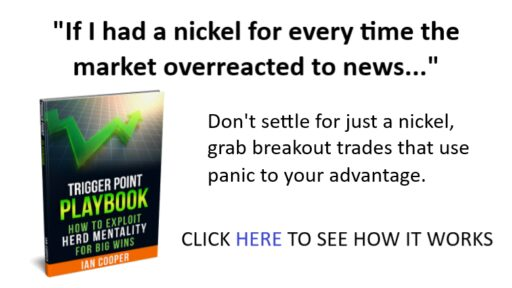by Wendy Kirkland
Underlying instruments are types of equities or financial “products”. As you have probably discovered, bookstore shelves are piled high with books that discuss a broad range of investing topics. Some of those books address just one feature of it. Here, I would like to focus on three types of underlying instruments to trade: Exchange Traded Funds, known as ETFs, Indexes, and Stocks. These will be the kinds of equities you will most likely choose to trade.
Exchange Traded Funds – ETFs
ETFs are described as a basket of stocks that are bought and sold as a package on an exchange, principally the AMEX, but also NYSE, CBOE and NASDAQ. In actuality, however, as a tool, ETFs offer more control and less risk than individual stocks. An ETF acts as a container of stocks from a number of companies, representing various industries within a sector held by the ETF. This distinguishes it from stocks from an individual company. So, an ETF is like buying a basket containing an orange, apple, grapes, kiwi and so forth. They’re different, but they’re all fruit.
Recently, ETFs have come into vogue, so to speak. Having come into their own as an investment instrument, new ETFs enter the marketplace every week. Some are “optionable”, while others are not. Optionable simply means that options are offered for sale. For example, a recently created ETF grouped hospital-related companies: pharmaceuticals, medical billing, labs, research, teaching, and diagnostics.
ETFs bear the same code symbols as equities. These are just a few of the commonly known group of stocks:
XAU – Gold and Silver
XLF – Financial Sector
UTH – Utilities Sector
SMH – Semiconductors
PPH – Pharmaceuticals
RTH – Retail
XLP – S&P Consumer Staples
IBB – NASDAQ Biotech
Indexes
Thousands of equities are traded on exchanges such as NASDAQ, AMEX, and NYSE. You no doubt are familiar with these exchanges because you hear the results on the day’s activities on these exchanges from the nightly news. In addition, most daily newspapers list an abbreviated version of the results of the previous day’s trading for one or more exchange.

An index is a collection of equities that are used as a measuring stick of sorts. The major indexes, the DOW (Dow Jones Industrial Average), NASDAQ, S&P (Standard and Poor’s) and Russell each list specific equities unique to their index. Subsets of stocks within their lists create smaller indexes. For example, the S&P 100 is a smaller index listed within the S&P 500. Some of these indexes “mimic” the performance of their major index, while others are more sector-related.
You have an “optionable index” when groups of the top equities combine with these indexes to become an index with options available for trade. Examples of these are:
QQQ – called Qs, an index of top 100 securities traded on the NASDAQ
DIA – called Diamonds, an index of the top 25 stocks traded on the DOW
SPY – called Spy or Spider, a group of securities traded on the S&P 500
OEX – a group 100 securities knows as the S&P 100
Advantages of ETFs and Indexes
ETFs and indexes are not subject to price variances in the same way you’d see with an individual company. An earnings report can bring about an unexpected jump or drop in a stock’s price, or when an FDA approval for a drug is delayed. These events influence the individual stock one way or another. But, with ETFs and indexes, up/down earnings’ reports, gains or losses of contracts, patent approval or losses, FDA approval or decline, or other company successes or setbacks have little or no effect on the ETF. Each individual company provides only one ripple within the large pond. ETFs and indexes are more likely to move with the industry, sector, or the market as a whole.
ETFs and indexes contain the relative weight of the whole group. One company can weaken – drop in stock price – but the dismal event only minimally affects the ETF or Index. Of course, if an equity within the index is a major corporation like Apple or Google, the index may drop a bit, but not to the degree experienced by the equity itself. This means options on an ETF or index carry less risk than options on an individual company.
Let me give an example, on September 11, 2013, Apple experienced its second worst day of the year by dropping nearly $27. Of 100 companies’ stock within the QQQ (Index/ETF of the NASDAQ), Apple adds the greatest percentage. On the same day, September 11th, the QQQs closed down .15 cents. A $27 drop for Apple was a 5.4% drop and .15 cent for the QQQs was .19%. That is a major difference!
If I try to put a negative twist on ETFs and Indexes, then I’d have to say that because the risk level is less, the level of reward is proportionate. These securities trudge along on surer footing, moving up, down and sideways in modest increments, and without the larger swings you see with some individual stocks. For those who want less risky option opportunities, ETFs and Indexes are the ideal way to go.











Recent Comments